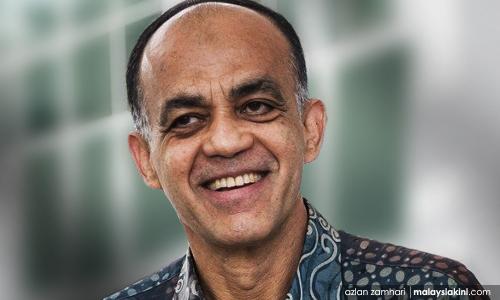Upsides to Syed Mokhtar buying into FGV
LETTER | Word from the grapevine has it that business tycoon Syed Mokhtar Albukhary is looking at the possibility of acquiring a stake in ailing plantation company, FGV Holdings Berhad (FGV). This news could not have come at a better time. After all, he is a visionary leader who is well-supported by a highly capable team. It would make perfect sense for the shareholders of FGV to listen to what the business tycoon has to offer.
Even prior to FGV’s reporting of its RM1.08 billion losses for 2018, the organisation has been monetising its assets to mitigate anticipated losses for 2019. FGV hoped that the "extraordinary" profits derived from the asset sale would help boost its financial performance for the year.
Unfortunately, this is only a "makeshift" measure and not a long-term solution. Furthermore, without proper due diligence, it might be disposing of valuable assets. Businesses conducted in this fashion are not sustainable, and FGV would continue to face losses in the years ahead if no concerted efforts are taken to restructure the organisation or its business model.
It was previously thought that the White Paper was the answer to Felda, FGV woes. But unfortunately, that fell short. It has been six months since the announcement of the White Paper, and there have been no significant and sustainable initiatives arising from the White Paper to suggest that FGV and Felda can benefit from healthy revenue streams and turnaround their escalating losses. Felda’s debt currently stands at RM14.4 billion and FGV is not helping with its dwindling performance since its listing in 2012.
So, when news about Syed Mokhtar's intent to acquire a substantial stake in FGV circulates, it would be right and for all intent and purposes for the shareholders of FGV to listen to what he has to offer – not that FGV has been outstandingly successful all these years!
FGV shares are currently traded around 90 sen, which is 80 percent below the IPO price of RM4.55. Given the vast price differential, there would some deliberations and concessions before an equitable price is arrived at, if at all.
But looking at the upsides, it could be a deal worth considering.
1. Reviewing the terms of the Land Lease Agreement (LLA) - In 2012 FGV was given the rights to manage 355,000ha of Felda's plantations under a 99-year-lease. In return, Felda was to receive RM248 million, plus 15 percent share of profits annually. This did not happen because FGV was paying Felda far below the RM800 million it (Felda) needed to manage the well-being of settlers. This is why the settlers are having problems today.
Imagine, the proposition if the land was returned to Felda (pre-FGV's IPO). How would Felda fair in its performance then?
2. Investing and revamping downstream, sugar and logistics sectors - By investing and revamping the downstream, sugar and logistics sectors would enable FGV to be more streamlined and focused as part of Felda’s value chain.
Investing in new high-tech has enabled plants and facilities that are more product-oriented (and not dependent on CPO price fluctuations) could mean a possible turnaround for FGV moving forward.
3. Instilling the concept of smart farming and new technologies - Under the circumstances, this would benefit Felda and the settlers, primarily in terms of increased yield per acre.
It is quite certain that there would be other areas which require restructuring. In a nutshell, Felda, FGV and the federal government must possess the will and determination to implement changes for the betterment of FGV thus enabling Felda to realise its aspirations.
FGV’s major shareholders (as of Aug 30, 2019) are Felda (21.24%); Felda Asset Holdings (12.42%); Urusharta Jamaah Sdn Bhd (7.78%); Kumpulan Wang Persaraan (5.6%); Koperasi Permodalan Felda (KPF) (5.24%); Pahang state government (5%). The rest is a free float. Urusharta is a MOF company.
On a separate note, news has it that KPF may raise rather than reduce its stake in FGV moving forward. KPF owns a 5.24 percent stake in FGV.
What is strange here is FGV’s profits have been dwindling over the years, resulting in an ultimate RM1.08billlion loss last year.
What is the use of KAF wanting to increase its stake when it had failed to bring value or contribute towards FGV’s performance in the past years? In fact, contrary to increasing its stake, KPF should just relinquish its stake in FGV altogether.
Given this, what FGV needs is a "lifeline" to revamp and turnaround the business to show sustainability and profitability. It has come to a point where the guardians of Felda and FGV need to be more pragmatic and produce resolutions that can positively impact FGV.
It’s times like these that we need the decisive actions of a "white knight" to save and turnaround national assets. It is time for the leadership to be open and consider proposals that are sustainable and that could bring good prospects not only to shareholders but also the settlers.
The views expressed here are those of the author/contributor and do not necessarily represent the views of Malaysiakini.
RM12.50 / month
- Unlimited access to award-winning journalism
- Comment and share your opinions on all our articles
- Gift interesting stories to your friends
- Tax deductable
